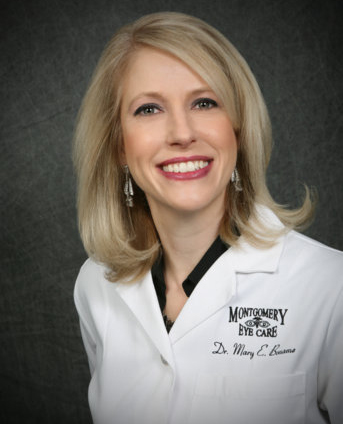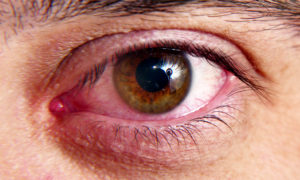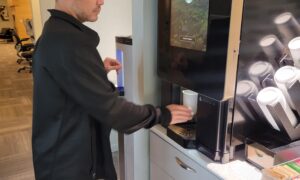By Mary E. Boname, OD, MS, FAAO
Ask lifestyle questions on your registration form, and then engage patients in conversation in the exam room. What you learn allows you to tailor your products and services to meet real patient needs.
Your patients each are more than two eyes and a list of prescriptions for eyeglasses and contact lenses and a medical history. Each comes with complex lifestyle and family needs. Taking the time to understand what those needs are–via lifestyle questions on patient history forms and by talking to them in the exam room–will allow you to effectively provide them with products and services. Engaging with patients also builds loyalty to your practice. A patient who has established a productive, pleasant relationship with a doctor is less likely to leave a practice than one who thinks of the doctor as no different from any other doctor they could find. Here is why and how I get to know each of my patients.
Five Minutes is All It Takes
My average exam is 30 minutes in length. I would say it takes about five minutes to “get to know” my patients. Of course, there are certain patients whom I know are very talkative, so I keep my “opening remarks” minimal to ensure that I complete all the testing.
Humanize Your Care
There is a tremendous practice-building power in “humanizing” the care that I provide for my patients. I am blessed with a photographic memory, and I can recall detail about all my patients. It sets patients at ease and illustrates that I care for all aspects of my patient’s health and well-being, not just their eyes. For example, if a patient mentions that she has just undergone a divorce at her last office visit and that she is experiencing related stress. I would remember to ask her about that. In addition to showing the patient that I care, the conversation opens up a discussion of the health issues that can arise when we are under stress. She might then mention that her family doctor has put her on a medication that I would then note could cause dry eye. Or a patient may have mentioned that he was in the process of buying a lake-side second home. I could then inquire about whether all the recreational activities at his new home could benefit from additional eyewear.
Value of Personalized Care
I do not use any electronic data collecting systems to aid my memory. My patients love the personalized attention to their care, and, although, I have been using electronic records since March 2007, I have seen the value of “relationship building” with my patients. It comes from looking them in the eye when I am talking with them, really listening, and showing an interest in other things that are happening in their lives that can impact their vision and general health. This DEFINITELY results in a lot of referrals to my practice.
Humanized Care = Better Care
Patients are human beings, just as I am, and I think it sets me apart as a physician to provide care that is tailored to them as unique individuals. Recently, I examined a new patient who has ocular surface disease and meibomian gland dysfunction. I prescribed medications for her, and reviewed their usage as I normally do, but I anticipated that, based on other events in her life, that she would not be compliant. She scheduled a follow-up visit in four weeks at which she admitted that she hadn’t even started her therapeutic regimen because her dog was receiving chemotherapy treatments and she was driving to the University of Pennsylvania veterinarian school at least three times per week. I explained that because she hadn’t started the regimen, that her condition had not improved, and, it would in fact, get worse if she chose to do nothing. I advised keeping her Restasis drops on her bedside table so she would be prompted to use them first thing in the morning, and at bedtime.
Use Lifestyle Form But Follow-Up in Exam Room
My history form asks about profession and hobbies, but I personally ask about the amount of time they spend on the computer/iPhone/iPad for work/pleasure, what they do for exercise and if they have siblings or parents living nearby. It is important to follow-up in the exam room by getting the patient to expound on the answers provided on written or electronic lifestyle questionnaires.
For instance, they may have said “no” to a question about hobbies or sports, but only because they misunderstood what you meant by “hobby” or “sport” thinking maybe that the knitting they do doesn’t count or that their long walks outside aren’t worth mentioning. It also is important to understand the extent of their needs. For instance, a person who only uses their computer for an hour a day after work just for fun is going to differ in needs from a person who works in an office in which they stare at a computer screen for sometimes several hours or longer with no break.
Begin Exam with Lifestyle Conversation
I like to begin the exam with life and lifestyle questions, and then I segue into the examination. It gives me tremendous insight into how compliant my patient will be with their treatment regimen, should one be required. Many patients in my age group are changing careers, and getting online degrees, in addition to continuing to work full time, so it’s essential to make sure I discuss all the possible means of correcting their refractive error, and addressing ocular surface disease, which is exacerbated by all of the extra time spent at the computer and reading.
Learn Conversation Starters
If you’re not an extravert who is comfortable striking up conversations with strangers, you can still have enjoyable, productive conversations with patients you never met before. One way to do that is to keep a set of conversation starters in your mind. With adults, I ask them to tell me more about their work, and if they have traveled at all or plan to. With school-age children, I ask about their favorite foods, subjects in school and what they like to do for fun.
Whenever I see a patient who has a terminal illness, I ALWAYS say, “it’s good to see you,” NEVER, “how are you?” And, I ask them if they traveled or had a “staycation.” If they like to read, I’ll ask what they have read recently that they enjoyed or if they have tried any new restaurants or seen any new movies. For children (during the summer), I ask if they started their reading list, or what they did on vacation. As summer draws to a close, I ask if they have a favorite subject at school, and my new favorite question: “If you “brown bag” it to school, what are you super-excited to see in your lunch bag?” A new 8-year-old patient said: “That’s easy. A peanut butter and jelly sandwich.” His mom told me that if she doesn’t put one in his lunch bag, he requests it as an after-school snack. I also ask what their favorite food/candy/dessert is and what they do to relax. I ask kids and adults alike if they exercise and if they would say that they eat plenty of fruits and vegetables.
Let Patients Know Why You Are Asking Personal Questions
I take a social history in which I ask patients about smoking, drinking, blood transfusions and sexually transmitted diseases. I always begin by saying: “I’m going to ask you a few questions to help me determine your risk for certain eye and systemic diseases. I am asking you, not from a place of judgment, but, objectively, as your physician, so I may provide the best possible care for you.”
I tell my smokers that smoking triples their risk of going blind due to macular degeneration. I ask EVERYONE about their stress level and what form of exercise they get. Several months ago, I joined a gym in the center where my office is located. I share this information with my patients, and I give out complimentary passes to the gym. I tell them: “if I can do it, you can too! And, it’s going to give you more energy and make you feel better about yourself.”
Staff Should Also Engage Patients in Conversation
My office manager greets patients and makes small talk with them. She has been with me 10 years, and she chats with patients easily when they come in. She has formed friendships with some of my patients who share her love of animals. They trade tips on the best veterinarian and pet sitters, and bring each other pet products. The optician uses her own lifestyle questionnaire to ensure that he is meeting all of the patient’s visual needs. I reinforce it in the exam room with my recommendations, and he reviews all of the recommendations when he is selecting optimal frames and lenses for each patient.
Ask About Patient Lifestyle and Vision Needs: Action Plan
Ask every patient to tell you how much time they spend on their computer each day. I discuss the blue radiation that is emitted from energy efficient light bulbs, computer screens, TVs, iPhones, iPads and other electronic devices. I wear my Blu-Tech lenses in the office, and I use them as a teaching tool for my patients. I take retinal photos for every patient, and I discuss the structures of the eye and what type of disease they are susceptible to. I also ask about UV-protective sunglasses, and if they currently have a pair. I draw the parallel between cumulative UV exposure and increased risk for cataracts, macular degeneration, pingueculae, pterygia, skin cancers on the lid or adnexae.
Ask patients what theylike to do for fun. Ask: “Do you have good sunglasses? Do you have an extra pair of glasses? Safety glasses for doing yard work or working with motorized tools around the house?”
Review family ocular and medical history, as well as personal ocular and health history. It’s a great way to discuss reducing the risks of “preventable” ocular diseases like macular degeneration, skin cancers around the eyes and adnexae. I discuss modifiable risk factors like diet and exercise and smoking status. I tell them: “We can’t change genetics, but we can modify our risks by changing our behavior and lifestyle.” I consider it my responsibility to educate my patients on the importance of taking better care of themselves to preserve their ocular and systemic health.
Related ROB Articles
A Grandfather’s Prescription for Excellence in Healthcare: Get to Know Your Patients
Doctor-Patient Communication Starters: Keys to Stellar Service
Make the Call: Build a Relationship with Patients Built on Trust
Mary E. Boname, OD, MS, FAAO, is the owner of Montgomery Eye Care, P.A., in Skillman, NJ. To contact her: mboname@mecnj.com.

























